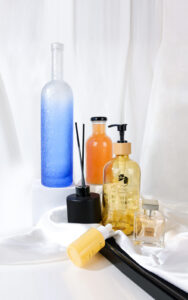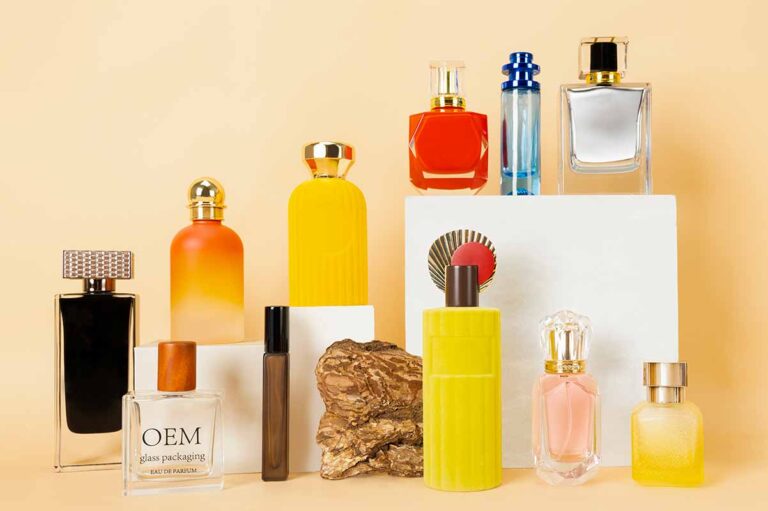Malt Liquor: Understanding Its Unique Flavor and Cultural Impact
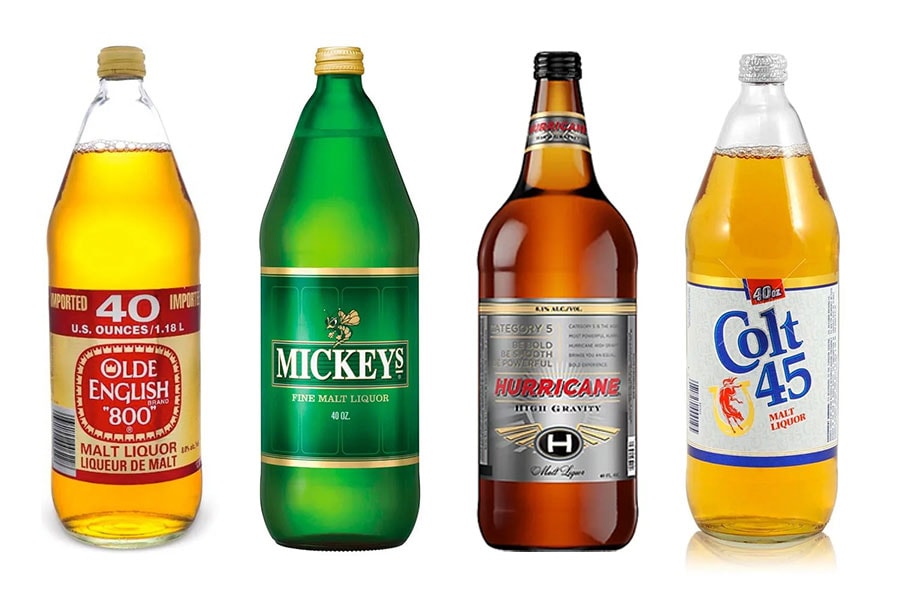
In most regions, malt liquor is associated with urban culture. A lot of celebrities and artists work closely with malt liquor brands, earning this popular drink a loyal following. Known for its sweet taste and fuller-bodied flavor profile, malt liquor seems to be winning the war against standard beers.
But what is malt liquor? In this detailed guide, we explain the history, ingredients, brewing processes, packaging, and marketing of malt liquor beverages.
Introduction to Malt Liquor
Malt liquor has an alcohol by volume (ABV) of between 6% to 9%, with some brands going as high as 14%. Beer drinkers looking for an alcoholic drink with a higher alcohol content will find malt liquor an ideal option.
It is essential to mention that the brewing process for malt liquor Vs beer differs, despite them using almost similar ingredients. The primary ingredients for both drinks are hops, yeast, and malted barley, while malt liquor has additional sugars and grains. Malt liquor has fewer hops, making it less bitter than regular beer.
Types of Malt Liquor
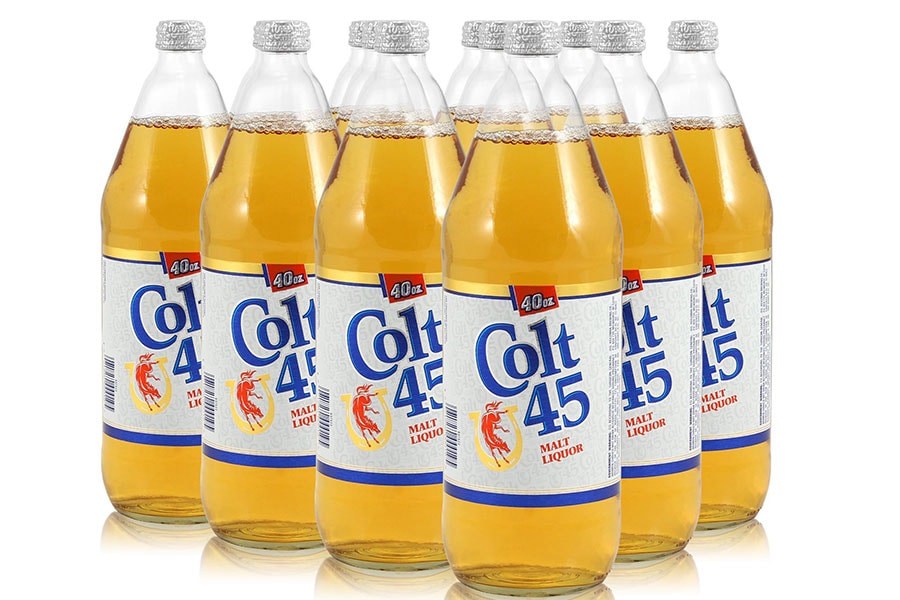
Popular Brands
The malt liquor industry has a variety of brands, each producing its own versions. Colt 45 malt liquor has an alcohol by volume of 5.61%, and is slightly sweet and super smooth, with a crisp, clean taste.
Steel Reserve has an abv of 8.1%, higher than most lagers and malt-based beverages. The use of extra malted barley in the brewing process of Steel Reserve malt liquor produces a crisp and balanced taste.
Country Club was among the first mass-produced malt liquors in the United States. It has an abv of 5.8% and is loved for its smooth, slightly grassy hop taste profile.
Flavored Malt Beverages
Some brands have introduced flavored malt beverages (FMB), by adding fruits and other natural flavors. Smirnoff Ice is a popular alternative to regular beer, replacing vodka with a malt base in its key ingredients. Smirnoff Ice has an abv of 4.5%, a fruity taste, and carbonation.
Mike’s hard lemonade is another popular flavored malt-based beverage. It involves the alcoholic fermentation of malted barley and then adding natural fruit flavors after filtering. Mike’s hard lemonade is among the few premium malt-based beverages in the market.
Production and Manufacturing

Key Ingredients
Malted grain is one of the primary ingredients of malt liquor. It contributes to the malt flavor and provides fermentable sugars. Hot water forms the base ingredient for brewing. Hops ( hop plants’ female flowers), a common ingredient in beer brewing, add aroma and bitterness.
Another essential ingredient in malt liquor brewing is yeast, which helps in sugar fermentation, resulting in the production of carbon dioxide and alcohol. Most brands include other grains such as rice or corn to boost the alcohol content.
Brewing Process
The brewing process for malt liquor and beer has some similarities and a few key differences.
- Mashing: Mix malted barley with hot water. The enzymes in the malt convert the starches into fermentable sugars. Mashing is a crucial stage for the malt liquor brewing process as it forms a strong base for additional sugars and non-malt grains.
- Boiling: Boil the mash and add a few hops to lower the sweetness a bit.
- Fermentation: Add yeast after cooling the wort in the fermenter. Extend the fermentation process past several weeks if you want a higher alcohol by volume. The longer you extend the fermentation process, the more yeast converts more sugars into alcohol. Take note of the yeast you’re using, as only some strains can convert sugars to higher alcohol content.
- Filteration: Conditioning is essential after fermentation to produce a smoother malt liquor with a higher alcohol by volume. Filtration is the last process before packaging to produce a clear malt liquor.
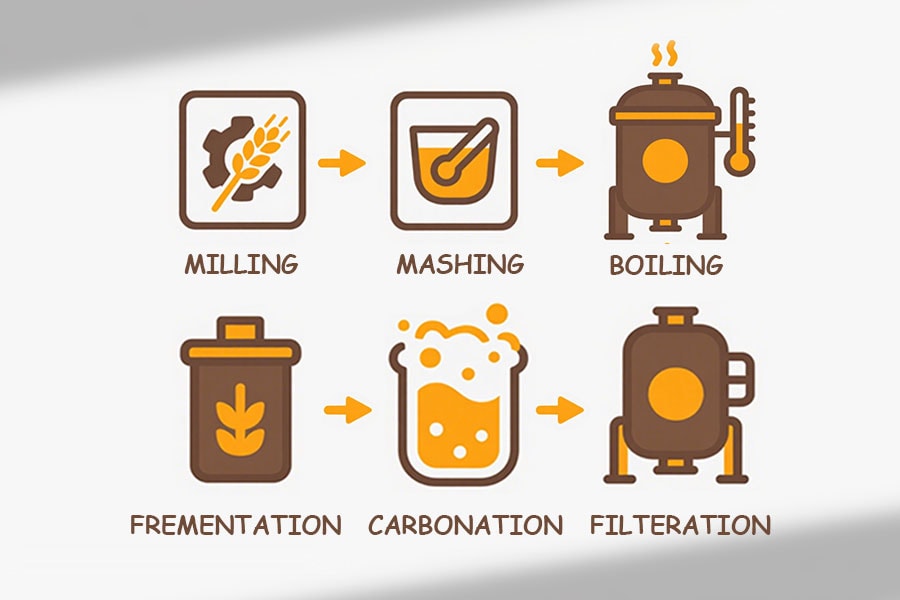
Fermentation Period
The ideal fermentation period for malt liquor is one week.
However, most malt liquor brewers extend the fermentation period to several weeks, allowing aging and maturation. Bottom fermentation allows yeast to ferment for a long time, making it an ideal brewing method.
Characteristics and Properties
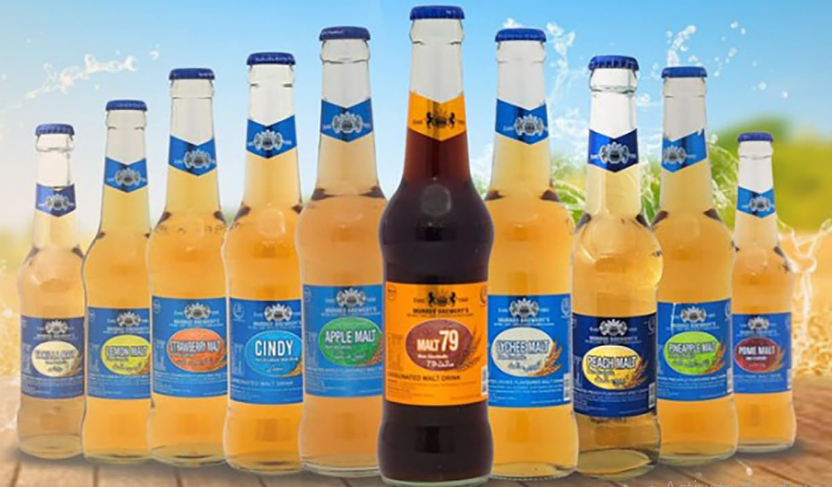
Alcohol by Volume (ABV)
Standard malt liquor has an abv that starts at 6%, while light malt liquor has a lower abv. However, because the term “light” is not regulated, you might find some malt liquors with a higher abv than others. It is always essential to check the abv on the label before consuming.
But what is malt alcohol and a standard drink? In the US, a standard drink has 8 ounces of malt liquor at 7% abv. Knowing how much alcohol content a particular malt liquor has allows an individual to make informed decisions. Individuals can avoid overconsumption.
Beer drinkers looking to cut down on their alcohol intake will find malt liquor a good option. It has a higher alcohol content, making you drunk faster after one or two drinks.
Color and Clarity
The color of malt liquor ranges from pale amber to golden, depending on the roasting period of the barley. Darker colors are a result of deeper roasting.
The clarity of malt liquors ranges from fair to good. At lower temperatures, some malt liquor beverages have a slight chill haze.

Taste Profile
Malt liquor is popular for its sweeter and less hoppy taste. Compared to regular beer, malt liquors tend to be less bitter as they have fewer hops. The non-malt grains add a sweeter taste profile to the malt.
However, some brands prefer a less sweeter taste profile and more alcohol sharpness.
Malt Liquor vs Beer: What’s the Difference?
When choosing a beer, there are a few factors that most people consider. Some beer drinkers prefer a rich flavor and will opt for a darker beer. Others want a beer with lower calories, opting for lighter beers.
Key Features | Malt Liquor | Regular Beer |
Alcohol % | 6% and 14.2% | 4% and 7% |
Taste | Sweet, malty flavor | Carbonated and less sweet. |
More bubbly than regular beer. | Beers offer a diverse variety of flavors and taste profile. | |
Packaging | Packaged in large containers, i.e, 40-ounce (bottles or tall cans). | Standard-sized smaller containers (cans and bottles, i.e, 12 fl oz). |
Price | More affordable than regular beer. | A bit pricier. |
Legal regulations | Defined as a “beer” with an ABV of over 5%. | Has an ABV lower than 5%. |
Cultural Significance and Impact
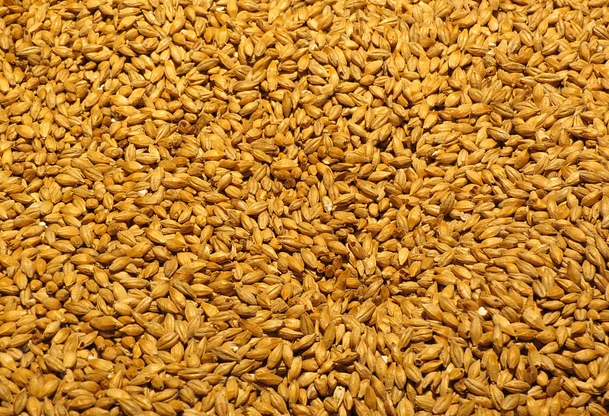
Historical Role in Communities
In the 1960s, most malt liquor brewers targeted African Americans as a new market for their brands. By the 1970s, most liquor brands were featuring African American individuals in their advertising efforts.
Currently, African Americans form a higher percentage of malt liquor consumers than their white counterparts. It’s no surprise to find different malt liquor beverages in social gatherings such as weddings and christenings.
Controversy
Unfortunately, malt liquor brands often face criticism for targeted advertising in low-income areas. Its budget-friendly price is seen as a way of exploiting poor individuals.
The increased consumption of malt liquor in such communities is linked to the rise of crime and health issues such as liver disease. Aggressive marketing has also led to alcohol-related problems, leading to economic and social instability.
History and Evolution
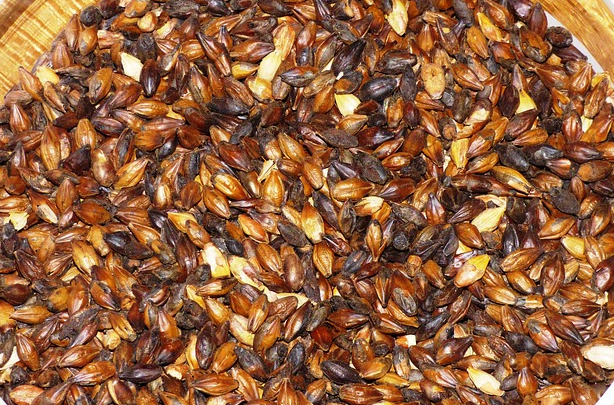
Origins in the Early 20th Century
The origin of malt liquor began in the mid-20th century, as early as 1940. Malt liquor brewers were looking for a way to offer stronger and more affordable alcoholic beverages. One of the ideas was to use less malt while increasing the alcohol content to cut down on production costs.
The initial targeted market was the urban areas, especially those who were looking for budget-friendly alcoholic beverages with a higher ABV. The working class primarily consumed malt liquor as a substitute for wine or spirits. The drink would spread to other communities in the American colonies and was popularly known as “corn beer”.
Flavor Innovations
Traditional malt liquor brewing relied on grains such as rice and corn to produce fermentable sugars, resulting in higher alcohol content. However, over time, most brands introduced other flavors.
Traditional flavors included hoppy, corny, and malty versions. Current malt liquor flavors include lemonade, pineapple, sunny margarita, strawberry, and others. Some brands offer multiple flavors.
Marketing and Advertising
When planning marketing and advertising for your brand’s malt liquor products, it is essential to carefully consider legal restrictions and ethical concerns. All marketing material should comply with applicable laws regarding legal age and responsible drinking. Avoid content that associates malt liquor with irresponsible and harmful behaviors.
Carefully consider all the laws and regulations that govern the sale and advertising of alcoholic beverages in your region. For example, in Finland, alcohol advertising in public places is prohibited. The placement of alcoholic product adverts in video games is illegal. In most regions, the marketing of alcoholic drinks to children is illegal.
Environmental Impact

Production Footprint
Barley growing, a key ingredient in malt liquor production, requires significant land. If not done sustainably, barley growing can lead to deforestation.
A lot of water is necessary for barley cultivation, which can be a major problem in areas facing water scarcity. Malting is a water-intensive process, and can also produce waste and byproducts that, if not well managed, lead to environmental harm.
Transportation and Packaging
Some regions have to import barley and transport it to various breweries. Different methods of transporting barley emit greenhouse gases, which contribute to air pollution.
Bottles and cans, primarily used for packaging malt liquor, often end up in landfills, also causing pollution. Choosing recyclable glass malt liquor packaging can help reduce this environmental impact.
Sustainability Efforts
Making optimal use of water in the various stages of malt liquor brewing can significantly reduce water consumption. Look for ways to recycle water, which results in less wastage.
Adopting energy-efficient methods, such as the use of heat exchangers for recovering and reusing, reduces energy demand. Insulating pipes and other equipment helps minimize heat loss. Switching to LED lighting and energy-saving equipment reduces electricity consumption.
Conclusion and Final Thoughts
In some cultures, malt liquor is a popular alcoholic beverage in key celebrations and even religious ceremonies. It is a connection to their traditional customs, while others view it as a source of revenue. However, just like any other alcoholic drink, malt liquor can cause health and mental issues. Excessive consumption of malt liquor can also be the source of socially irresponsible behaviour.
However, malt liquor continues to be popular than other beers, largely due to its budget-friendly price. Others prefer malt liquor due to its sweeter taste and lighter body when compared to traditional beers. In the future, price-sensitive consumers and those looking to reduce alcohol consumption might opt for craft beers or malt-flavored beverages.
HUIHE PACK is a leading manufacturer of glass packaging solutions for the liquor and beverage industry. Contact us for custom designs for your malt liquor product packaging.

FAQs About Malt Liquor
Q1: What Is a Bloody Mary Malt Beverage?
A Bloody Mary malt beverage is a classic Bloody Mary with the addition of malt. Tomato juice, a vodka base, Worcestershire, and hot sauce are the traditional ingredients of a Bloody Mary beverage.
Replacing the vodka base with malt beverages converts it into a Bloody Mary malt beverage.
Q2: Is malt liquor stronger than beer?
In terms of alcohol content, malt liquor is stronger than beer. The alcohol content for malt liquor ranges between 6% to 14%. Most beers have an alcohol content of between 4% to 6%.
Q3: Can malt liquor get you drunk faster?
Yes, due to a higher alcohol content by volume, malt liquor can get you drunk faster than most beers.
Q4: Is a Bloody Mary malt beverage real vodka?
No, Bloody Mary malt beverage does not contain vodka.
Q5: What’s the alcohol content of malt liquor?
Malt liquor typically has an alcohol content that ranges between 6% to 12%.
Q6: Is malt liquor legal everywhere?
Malt liquor is not legal everywhere. Each state regulates how alcoholic beverages are sold within the state. Some states prohibit the sale of alcoholic beverages within their boundaries.



